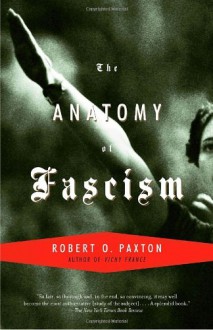
About the Book

Book: A Promise Child
Author: Kathryn Spurgeon
Genre: Inspirational historic fiction
Release Date: September 10, 2017
She can’t survive the ‘30s alone…
Sibyl Trimble does everything she can to keep her family together. Before falling in love with a handsome, penniless hobo, she lived a life of new cars, speakeasies dances, and fancy cloche hats.
Then the Great Depression hits Oklahoma. The wind blows topsoil away, hundreds of jobless men hang around town, and the economy falls apart. Even Fremont, her strong, stable husband, grows discouraged and considers leaving as they struggle to put food on the table.
When disaster strikes again, will Sibyl and Fremont move on to California or try to survive in Oklahoma? Neither option sounds promising.
Click HERE to get your copy
About the Author

Kathryn Spurgeon, an award-winning author and recipient of a 2018 Illumination Book Award, has published over a hundred stories, articles, and poems. She grew up on an Oklahoma farm before moving to South Korea, where she adopted two children. She and her husband, Bill, hold weekly studies in their home for international college students. They have six children and twelve grandchildren.
More from Kathryn
Researching and writing about the 1930s has been a blast, and although it was the economically worst decade of the last century, faith, love, and life went on. It has been fun to glimpse into that historical time and find amazing and uplifting stories.
My Review
America is deep in the throes of the Great Depression as Sibyl Trimble Pope’s story continues with “A Promise Child” by Kathryn Spurgeon. Reading about deprivation and desperation weighs heavily on the heart but is nevertheless inspiring because of those who refused to give in to defeat and who trusted the Lord in spite of it all. My grandparents grew up during this time period, and my grandpap joined the Civilian Conservation Corps and headed west, so I enjoy reading about the lives of the characters in Spurgeon’s books. It is necessary to read book one, “A Promise to Break,” first in order to understand this second one fully.
Following the divorce of her parents, Sibyl faces ongoing social ostracism as well as a conflicted heart. She worries that she is not good enough and that her marriage will follow the same destructive pattern as that of her parents. Being raised and groomed for success in the upper echelons of society, she feels out of place in her husband’s world, but she knows that her place is by his side. The effects of the trauma and stress are evident in the characters and remind readers to turn to God and trust Him to provide for each of us. Sibyl determines that: “We would not only survive but thrive in this restricting environment. We would create a family to be proud of. I heard that overcoming difficulties makes you strong. Well, now was the time to be strong.” This message resonates throughout the narrative, which is based on a true story. First-person narration sharpens the intimate feeling that the story evokes, and with a chapter or two allotted to most months, this book reads something like a diary. Sibyl’s view continues to shift and adapt to each day’s challenges as she searches her heart and discovers what joy can be found in the simplest pleasures of life: “Papa taught prestige and riches would transform the world. All I wanted was to find peace, especially for the ones I loved.” In a world where we are all looking for peace, we need to remember that God’s peace passes all understanding, no matter our circumstances or where we live.
I received a complimentary copy of this book through Celebrate Lit and was not required to post a favorable review. All opinions are my own.
Blog Stops
Texas Book-aholic, January 16
Debbie’s Dusty Deliberations, January 16
For Him and My Family, January 17
Reflections From My Bookshelves, January 18
Inklings and notions, January 19
Happily Managing a Household of Boys, January 19
A Reader’s Brain, January 20
Christian Bookaholic, January 21
Betti Mace, January 22
For The Love of Books, January 22
Life of Literature, January 23
deb’s Book Review, January 23
Older & Smarter?, January 24
For the Love of Literature, January 25
Mypreciousbitsandmusings, January 26
Bigreadersite, January 26
Truth and Grace Homeschool Academy, January 27
Locks, Hooks and Books, January 28
Emily Yager, January 28
Pause for Tales, January 29

 Log in with Facebook
Log in with Facebook 












